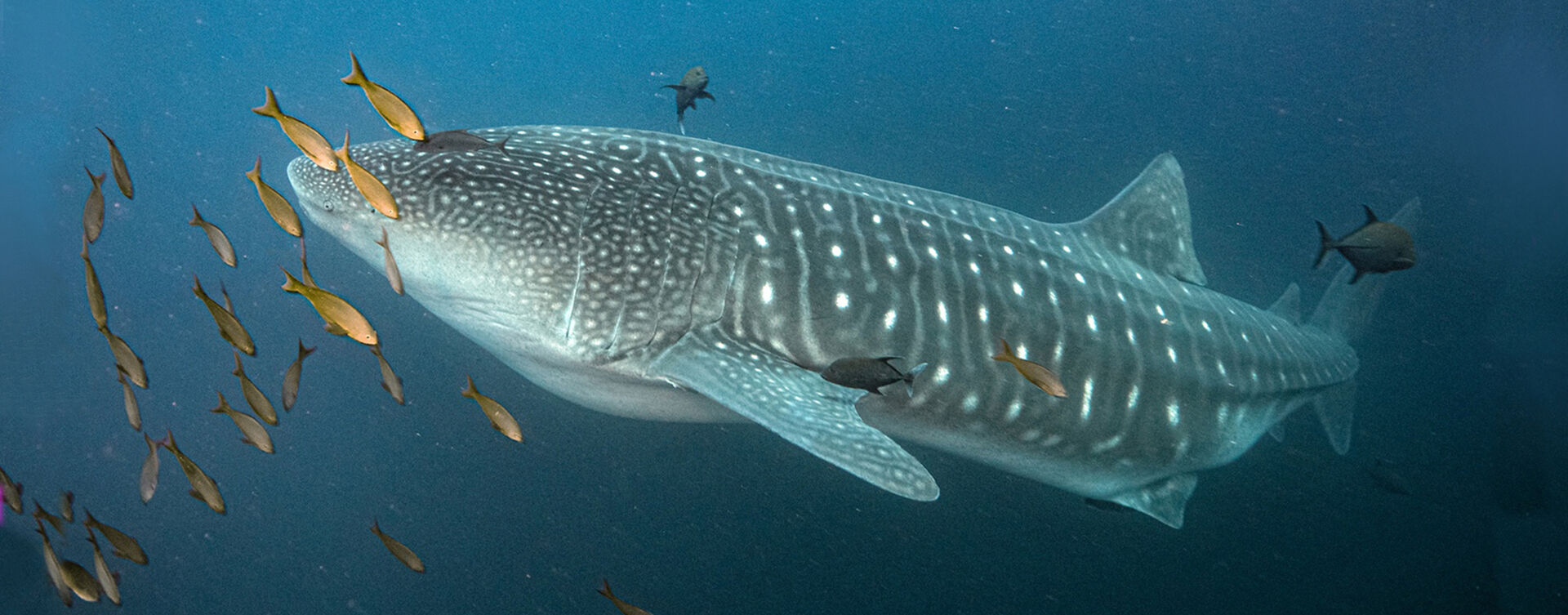
Liveaboard Report: Humboldt Explorer and Tiburon Explorer
11 November 2024
Hammerheads, mantas, whale sharks – these are the superstars of Galapagos diving. The supporting cast is even more impressive. Sitting at the convergent of ocean currents, these UNESCO World Heritage islands offer an unrivaled diversity of marine life. Divers may encounter up to 30 species of sharks, 15 species of rays, fur seals, sea lions, mola mola, whales, dolphins, sea turtles, thick schools of snappers, groupers, and barracuda, endemic reef fish and hundreds of varieties of invertebrates.

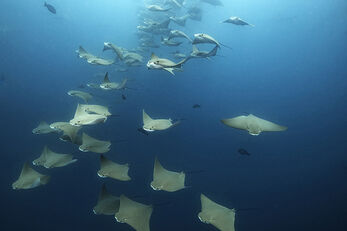
Surface intervals are equally as rewarding with observations of free-diving marine iguana, penguins, flightless birds and giant tortoises. The best way to take it all in is with a liveaboard cruise that covers several islands and visits sites not accessible from land-based resorts. Two top choice for divers looking to get the total Galapagos diving experience are the liveaboard of the Explorer Venture fleet.
Tailor Made For Galapagos Diving
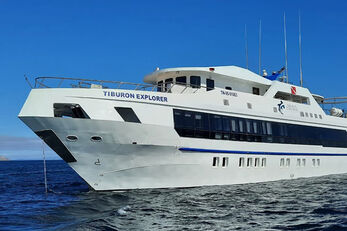
The Tiburon Explorer was purpose-built for Galapagos diving with an emphasis on spaciousness and stability. Its 125-foot length allows for an expansive dive deck without compromising social areas or cabin size. A signature feature of the boat's 9 guest cabins are the large windows that provide panoramic views and a sense of openness. A maximum of 16 guests are accommodated in six main-deck cabins and three lower-deck cabins. Berths that can be configured for couples or buddy pairs, and one cabin reserved for solo travelers. All cabins feature private baths and showers, individually controlled air-conditioning and ample storage spaces. Public areas include a covered sun deck with a hot tub and ample seating, an outdoor dining area, a climate-controlled salon area with indoor dining, a bar and an entertainment area.
The Explorer's dive deck includes a bathroom, a large camera table with a charging station, individual storage areas, rinse bins for cameras, and another for gear. Diving operations are conducted from two large tenders easily boarded from the water-level dive platform. Twin Bauer compressors provide redundancy and a membrane system delivers an unlimited supply of 32% nitrox.

The second member of the Explorer fleet, the Humboldt Explorer, is fresh from a recent refit that included stem-to-stern upgrades. This 111-foot small ship supports 16 divers in eight twin-share or queen berth cabins divided between the main and lower decks. All cabins have large windows, individual air conditioning, flat-screen entertainment systems and private baths. The top deck features a partially covered sun deck with a hot tub and ample seating.

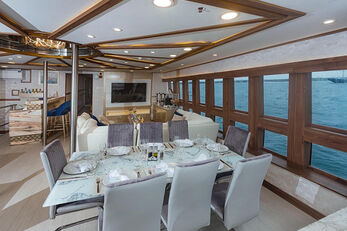
The Humboldt's main deck is devoted to a fullwidth central cabin that incorporates a salon area with dining, a bar, and an entertainment area. The stern dive deck is configured to provide all divers with ample personal space at each gear station. The deck area includes an adjacent bathroom and shower, a dedicated camera table with a charging station, individual storage areas, separate rinse bins for cameras and other gear, and individual storage areas,. All dives are made from a pair of accompanying dive launches, with full gear assistance provided by the boat crew and dive masters. Nitrox is available.

Itineraries
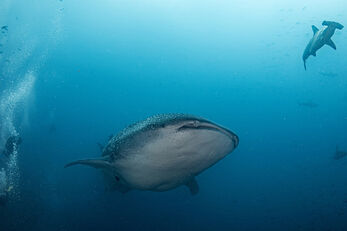
The Humboldt Explorer and Tiburon Explorer offer 7- and 10-night itineraries with 2 to 4 dives a day, allowing for up to 19 dives on 7-night trips and up to 28 dives on 10-night trips. All trips begin and end on the island of Baltra. Day one opens with familiarization dives in local waters known for sightings of rays and large fish schools. The afternoon is devoted to land excursions on North Seymour Island to view colonies of Blue Footed Boobies, Frigate Birds, Sea Lions and Marine Iguanas. An overnight transit reaches Wolf Island and the star attractions of Galapagos diving: hammerheads, whale sharks, mantas, eagle rays, sea lions, Galapagos sharks, silky sharks, dolphins and more.

The Explorer boats to spend four full days at Wolf Island and nearby Darwin Island, with opportunities for up to 15 dives up to 15 dives on the area's famous sites. Seven-night itineraries devote the final day of diving to sites at Cousin’s Rock. This area offers excellent macro diving plus sea lions and eagle rays. An afternoon visit to the Santa Cruz Highlands includes a visit to the Darwin Center, chance to view giant tortoises in their natural habitat and an evening in the town of Puerto Ayora.

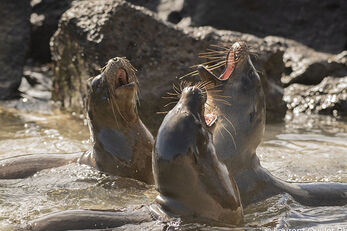
Ten-night excursions include an additional day at Wolf and Darwin Islands with a chance for three additional dives. Next is a day of diving at Cabo Douglas to view flightless cormorants and penguins and dive with breath-holding marine iguanas. This area is also known for mola mola sightings. A day is also devoted to sites at Cape Marshal, an area known for pinnacles, big walls, mantas and a wide variety of pelagic fish sightings.
Caradonna represents the boats of the Explorer Venture fleet, and ca create complete itineraries that include airfare, land transfers and other details of entry and travel. Contact our expert agents at 800-329-9989 or send a note to sales@caradonna.com.